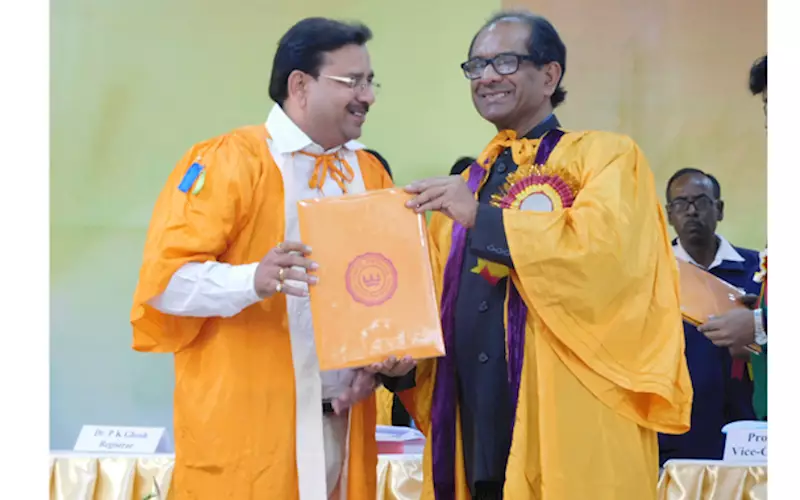PVG's flexo project by Dr Joshi to benefit industry
Dr Akshay V Joshi, research co-ordinator, Printing Engineering Department at PVG in Pune is working on a research project that focusses on flexo technology. He spoke to PrintWeek India about it.
27 Mar 2017 | By Priya Raju
Priya Raju (PR): What is the title of your project?
Akshay Joshi (AJ): Optimisation of flexo process parameters to reduce overall manufacturing cost
PR: Why flexo?
AJ: The flexo print industry has grown drastically in the last decade due to its ability to print on variety of stocks. The ink transfer in flexography on flexible substrates is governed by factors such as ink viscosity, anilox line screen, press speed, dot shape, type of substrate and resin. The above-mentioned parameters if not monitored and controlled leads to wastage of inks, substrate, solvents and printed stocks; thereby affecting productivity and profitability of an organisation.
PR: Your focus is on material science, isn't it?
AJ: The material cost plays a crucial role in productivity and profitability of an organisation; hence its usage should be to the fullest of potential. Optimum usage of substrates and ink demands identification of key process parameters on the printing press.
PR: What is the focus of your work?
AJ: The work focuses on optimising the flexo process parameters with NC (Nitrocellulose) ink to reduce overall manufacturing cost while maintaining the print quality.
PR: How do you evaluate the printability?
AJ: The printability has been evaluated for the output response such as density, ink gsm, print gloss, delta E and mottle on three-layer polyethylene (PE) film of 40 microns thickness with a mean opacity of 79% and 82.4% respectively. The DOE (Design of Experiments) was developed with factors such as ink viscosity, anilox volume, plate dot shape and substrate opacity at varying levels. The experimental data was analyzed through Main Effect, Interaction Plot and ANOVA (Analysis of Variance).
PR: Dr Joshi, what are the results, thusfar?
AJ: The results revealed reduction in solid mottle, ink gsm and while the print gloss and dot circularity were enhanced for a higher opacity substrate. Moreover, a regression models were developed for the output response and validated by conducting additional runs. The optimised settings showed an overall improvement in printability by and a reduction in ink consumption.
PR: What do we learn from this?
AJ: The results shall help to optimise ink transfer and identify the key process variables minimising the print defects thereby enhancing the print quality.
PR: It is early days, but what are your findings?
AJ: The findings of this study shall save overall cost for an 8-colour commodity or specialty job. The overall manufacturing cost of flexo is higher than gravure despite having lower ink gsm is attributed to the fact that cost of flexo ink is higher than that of gravure.
PR: Highlight of the project?
AJ: This project shall increase the productivity and profitability of a convertor and will make a systematic inroad for flexo in a space which is currently dominated by the rotogravure print industry.
PR: Any message for our industry?
AJ: With a proper balance of ink gsm, less machine stoppages for plate clean up on press, film opacity, plate material, plate making process, correct backing tape, anilox combination and printing machine parameters, the overall printing manufacturing cost of flexo will get lower. This reduction in print manufacturing costs will enable a flexo converter to work on reduced price offering to the customer which in turn will increase the print volumes, thereby increasing the quantum of all print consumable supplier quantities such as inks, tapes etc.














 See All
See All